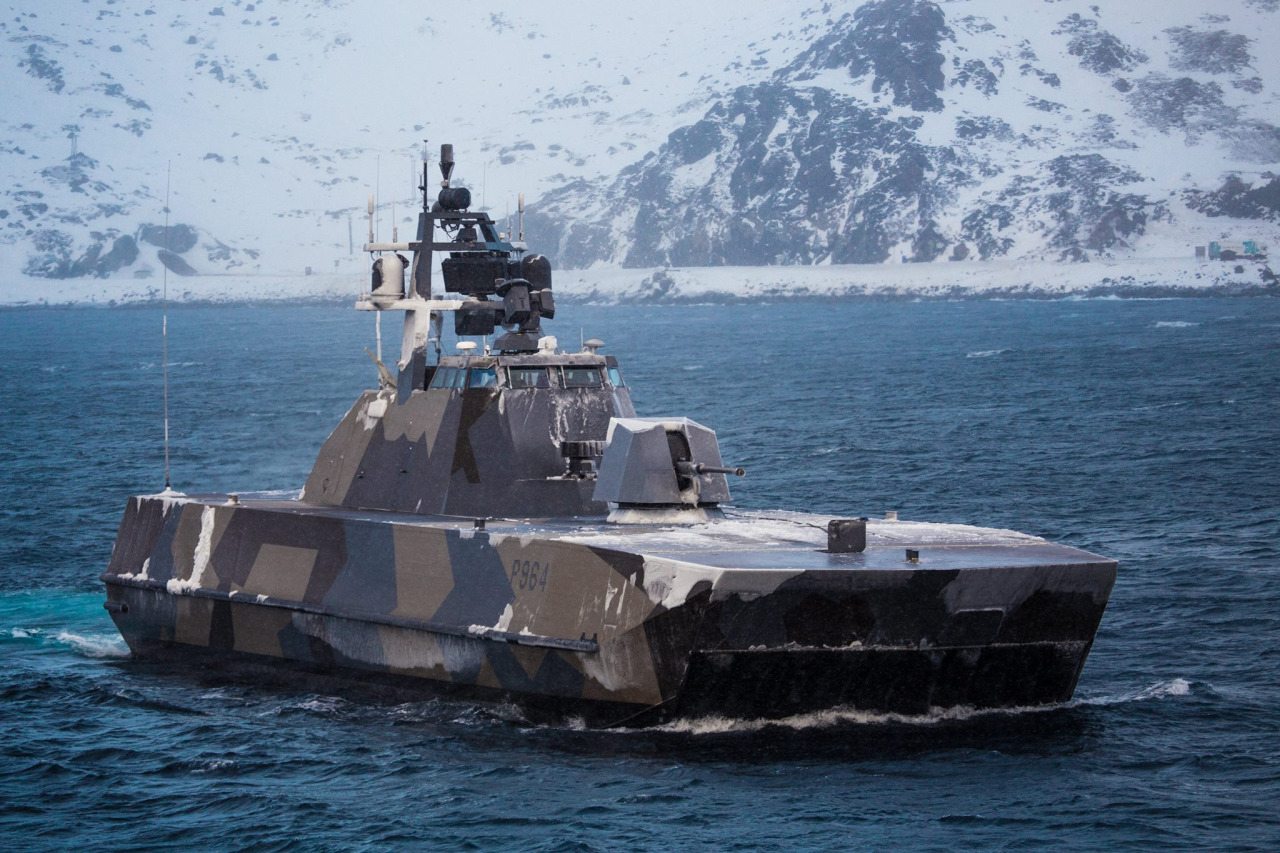Skjold-class corvettes (skjold means “shield” in Norwegian) are a class of six large, superfast, stealth missile corvettes in service with the Royal Norwegian Navy. The Royal Norwegian Navy has described them as corvettes (korvett) because their seaworthiness is seen as comparable to corvettes. They were built at the Umoe Mandal yard. With a maximum speed of 60 knots (110 km/h), the Skold-class corvettes were the fastest combat ships afloat at the time of their introduction. The ship’s configuration uses an air cushion catamaran (ACC) design, which is an advanced variant of surface effect ship (SES) technology. The main propulsion is by waterjet, which offers very shallow draught and extraordinary manoeuvring capabilities.
The ship is armed with eight Kongsberg NSM (Norwegian strike missile) anti-ship missiles, which have been developed for the Skjold Class ships and for the Fritjof Nansen frigates. The NSM missile is equipped with GPS midcourse and a dual-band imaging infrared seeker guidance and has a range in excess of 150km. The ship’s short-range surface-to-air missile is the infrared-guided MBDA Mistral in a portable configuration. The ship’s gun, for deployment against aircraft and other vessels, is the Oto Melara 76mm Super Rapid. The gun has a burst-firing rate of 120rpm, firing six kilograms shells to a range of 16km.
In September 2002, Skjold completed a 13-month deployment in the US, allowing the US Navy to study the Skjold Class concept. The ship participated in a series of naval exercises and a number of tests with US Navy research establishments NAVSEA and the Office of Naval Research. This was the result of a bilateral agreement in which the US Navy reviewed the Skjold capabilities and performance as part of their transformational activities, including littoral combat ship (LCS) development.















